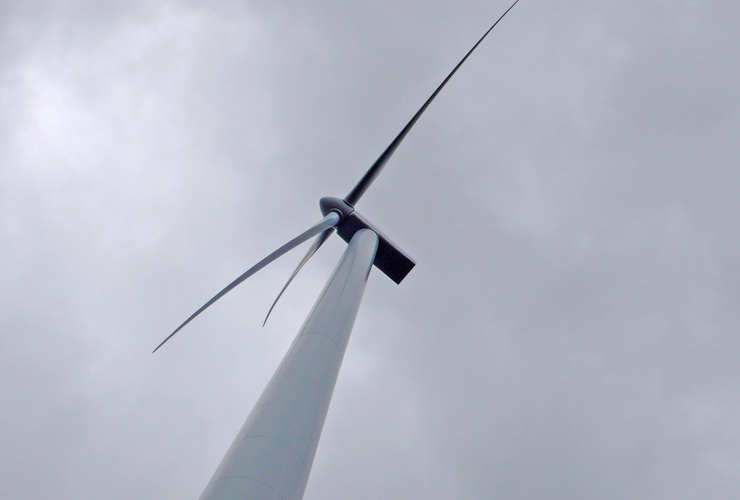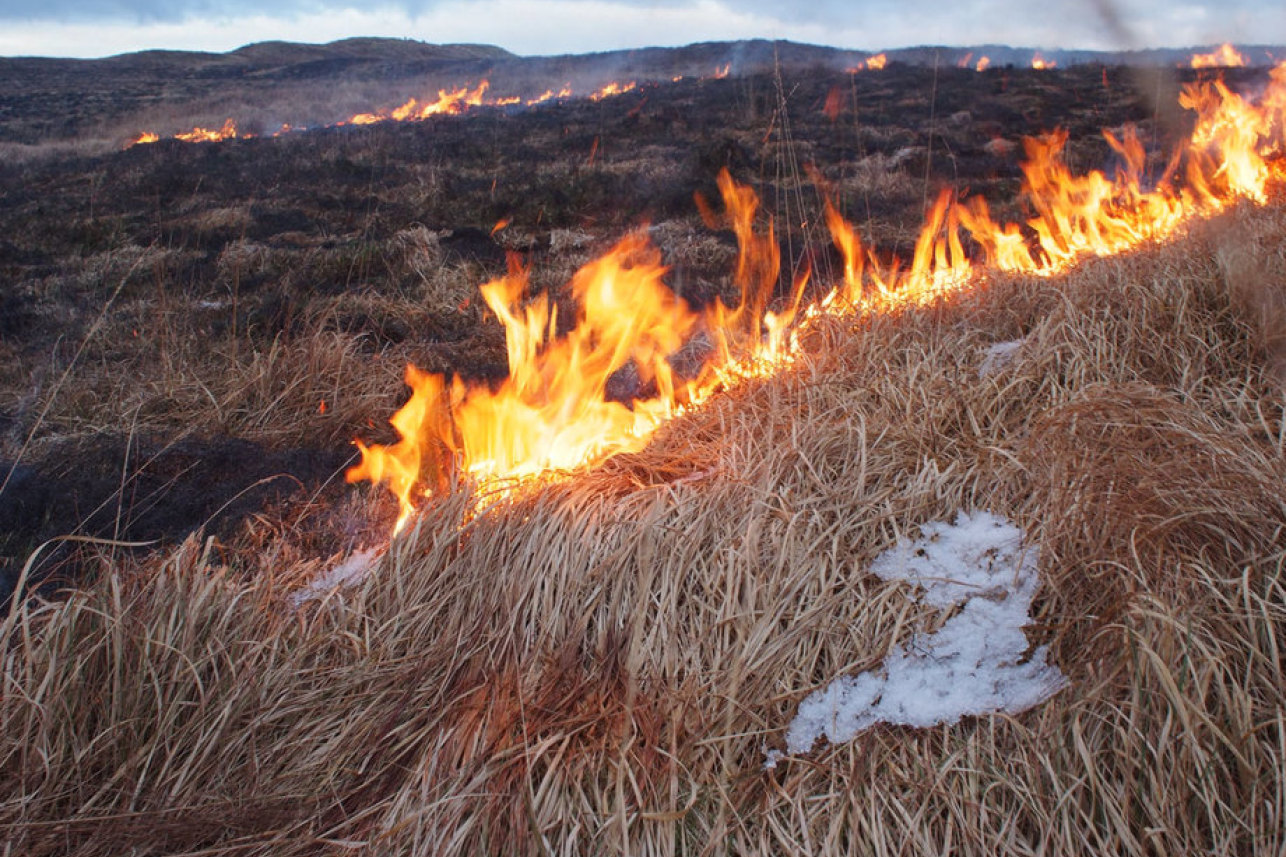An ill wind blowing at Creag Riabhach?
In advance of Global Wind Day on 15 June, we reflect on how far wind energy has come and how much further it has to go to protect wild places and their habitats as we object to an application to extend Creag Riabhach Wind Farm's lifespan.

An important milestone was reached on a sunny Sunday in June 2019. The carbon content of electricity hit an all-time low, falling below 100 g/kWh across a whole day for the first time; renewables hit an all-time high, supplying more than half of Britain’s electricity over a full day; and for the first time ever, less than a tenth of electricity was produced from fossil fuels. This signalled Britain’s progress towards a cleaner power system.
Since the 18th century we have been using fossil fuels to heat our homes and generate electricity. But with these resources depleting rapidly with each year as well as the detrimental effects of burning fossil fuels on climate change, there has been a rise in the investment into renewable energy sources that cause less of an impact on the production of greenhouse gases. However, these ‘green’ sources of energy aren’t always as good for the environment as we believe.
The first wind farm in the UK, Delabole, was opened in 1991 in Cornwall with 10 turbines, creating enough power output to supply 2,700 homes with energy. Now in 2023, there are over 2,600 on-shore and off-shore wind farms across the UK, totalling to around 11.5 thousand wind turbines, providing 24% of UK electricity in 2020. The UK also holds the title to largest off-shore wind farm in the world, Hornsea, located just off the coast of Yorkshire.
This substantial increase in investment in ‘greener’ energy can in part be attributed to the UK government setting a legally binding target of ‘Net Zero’ greenhouse gas emissions by 2050. This means that there is a greater focus on reducing carbon emissions as much as possible first, and only offsetting unavoidable, residual carbon dioxide (CO₂) as a last resort. As CO₂ is the most dangerous of greenhouse gases, it is imperative that changes are made to both cut down on emissions in the first place but also to sequester any carbon that is produced.
Natural carbon stores in crisis
The process of carbon capture and storage (CCS) involves capturing carbon emissions from the atmosphere that have been created either through manmade sources or natural occurrences, and then transporting and storing this carbon safely, preventing the release of more carbon into the atmosphere as well as reducing the level of carbon already in the atmosphere. This can be done in a number of different ways but arguably the easiest way to achieve this is through biological means - for example:
- Oceans currently absorb around 25 per cent of the worlds carbon emissions, with colder regions like the north or south poles absorbing more emissions than compared to warmer regions.
- Forests also account for around 25 per cent of carbon absorption converting CO₂ into oxygen through the process of photosynthesis.
- Soil itself also accounts for a large proportion of carbon sequestration; this is due to the fact that soil is marginally made up of plant material. When the plants had been alive they absorbed carbon and when died, still contained this carbon.
Therefore, when natural ecosystems become disturbed through man-made developments, this carbon which has been stored safely for thousands of years is released into the atmosphere and increases the level of greenhouse gases, contributing negatively to the climate crisis.
It is estimated that over the past 12,000 years, the growth of farmland alone has released about 110 billion metric tons of carbon from the top layer of soil. This goes to show that we must be responsible about managing the land that we plan to develop and acknowledge the impacts that might cause, even for renewable energy developments such as wind farms.
Are developers too ambitious?
This leads us to why we have objected to the proposed extension of the operational period of the Creag Riabhach Wind Farm in Sutherland.
The Trust, among others, previously objected to the wind farm due to its siting, partly within the Foinaven Ben Hee Wild Land Area, a sensitive wild area including nationally important peatlands. The Highland Council subsequently approved the application in 2016.
In early 2023, construction was completed and the site became operational. During its construction we were made aware of concerns that planning conditions, particularly those related to the safe storage of excavated peat for re-use on site, were not being complied with.
In March 2023, a Proposed Variation to extend the operational life from 25 to 40 years was submitted. There was no explanation as to why it was being sought so soon after the development had become operational and before there could be any reassurance that all planning conditions had been discharged successfully.
Given the sensitive location of this site, and in the absence of monitoring data to understand the impact the development is having on the environment, we objected to the application to extend its operational life.
By requesting permission for the Proposed Variation now, rather than at the end of the consented period, the Applicant is unnecessarily asking Scottish Ministers to predict Scotland’s land use priorities in 2063. In granting an extension Ministers need to be confident that a site will remain appropriate for a large-scale development in 2063 and, in our view, they should also be satisfied that environmental harm is being avoided, and, under new National Planning Policies, that biodiversity is being enhanced.
This area around the wind farm contains extensive peatlands which are incredibly important in terms of CCS as they are the largest natural terrestrial carbon store, storing more carbon than all other vegetation types in the world combined. Peatland areas sequesters 0.37 gigatonnes of CO₂ a year, which is about the same amount of carbon produced by 80 million cars each year. Damaging this wetland has become a major source of greenhouse gas emissions, responsible for almost 5% of global human-related CO₂ emissions. Without any guarantees for the appropriate environmental protection of the peatland on this site or adjacent to it, we did not think an extension to the operational life of the wind farm was appropriate.
- Find out more about the Creag Riabhach proposed variations and our objections.

Help us defend wild places and campaign for their protection
Please donate to our campaign fund

